Introduction
Inclusive education is essential for all students, especially those with autism, as it nurtures an environment where diversity is not only acknowledged but celebrated. Integrating students with autism into mainstream classrooms promotes meaningful social interactions and fosters the development of empathy among peers. This inclusive approach not only benefits students with autism but also enriches the educational experience for everyone.
For example, initiatives like the “Let’s Keep Talking” theme during Neurodiversity Week emphasize continuous dialogue and accessibility, reflecting the importance of ongoing awareness and inclusion. This theme was brought to life through activities such as teaching British Sign Language and interpreted assemblies, ensuring that neurodiversity is a permanent part of school culture.
Research supports the effectiveness of inclusive education policies. Studies, such as those published in reputable journals like Educational Evaluation and Policy Analysis, have shown positive impacts across multiple schools and years. These findings underscore the significance of implementing inclusive practices from early childhood through elementary education, as reinforced by the Individuals with Disabilities Education Act (IDEA).
Additionally, the International Day of Persons with Disabilities highlights the global effort to uphold the rights and well-being of individuals with disabilities. This day serves as a reminder of the collective impact of communities working towards more inclusive societies, aligning with the values promoted by inclusive education.
Furthermore, participation in inclusive programs can significantly enhance the mental health and well-being of children with disabilities. By recognizing their unique needs and strengths, and providing the necessary resources for their development, it is possible to ensure a supportive and equitable educational environment for all students.
The Importance of Inclusive Education
Inclusive education is vital for everyone, particularly individuals with developmental differences, as it fosters a setting where diversity is not just recognized but also celebrated. Incorporating individuals with developmental differences into regular classrooms encourages significant social exchanges and nurtures the growth of empathy among classmates. This inclusive approach not only benefits individuals with autism but also enhances the educational experience for all.
For example, initiatives like the “Let’s Keep Talking” theme during Neurodiversity Week emphasize continuous dialogue and accessibility, reflecting the importance of ongoing awareness and inclusion. This theme was brought to life through activities such as teaching British Sign Language and interpreted assemblies, ensuring that neurodiversity is a permanent part of school culture.
Research supports the effectiveness of inclusive education policies. Studies, such as those published in reputable journals like Educational Evaluation and Policy Analysis, have shown positive impacts across multiple schools and years. These findings underscore the significance of implementing inclusive practices from early childhood through elementary education, as reinforced by the Individuals with Disabilities Education Act (IDEA).
Additionally, the International Day of Persons with Disabilities highlights the global effort to uphold the rights and well-being of individuals with disabilities. This day serves as a reminder of the collective impact of communities working towards more inclusive societies, aligning with the values promoted by inclusive education.
Furthermore, participation in inclusive programs can significantly enhance the mental health and well-being of children with disabilities. By acknowledging their unique needs and strengths, and supplying the necessary resources for their growth, we can ensure a supportive and equitable educational environment for everyone.
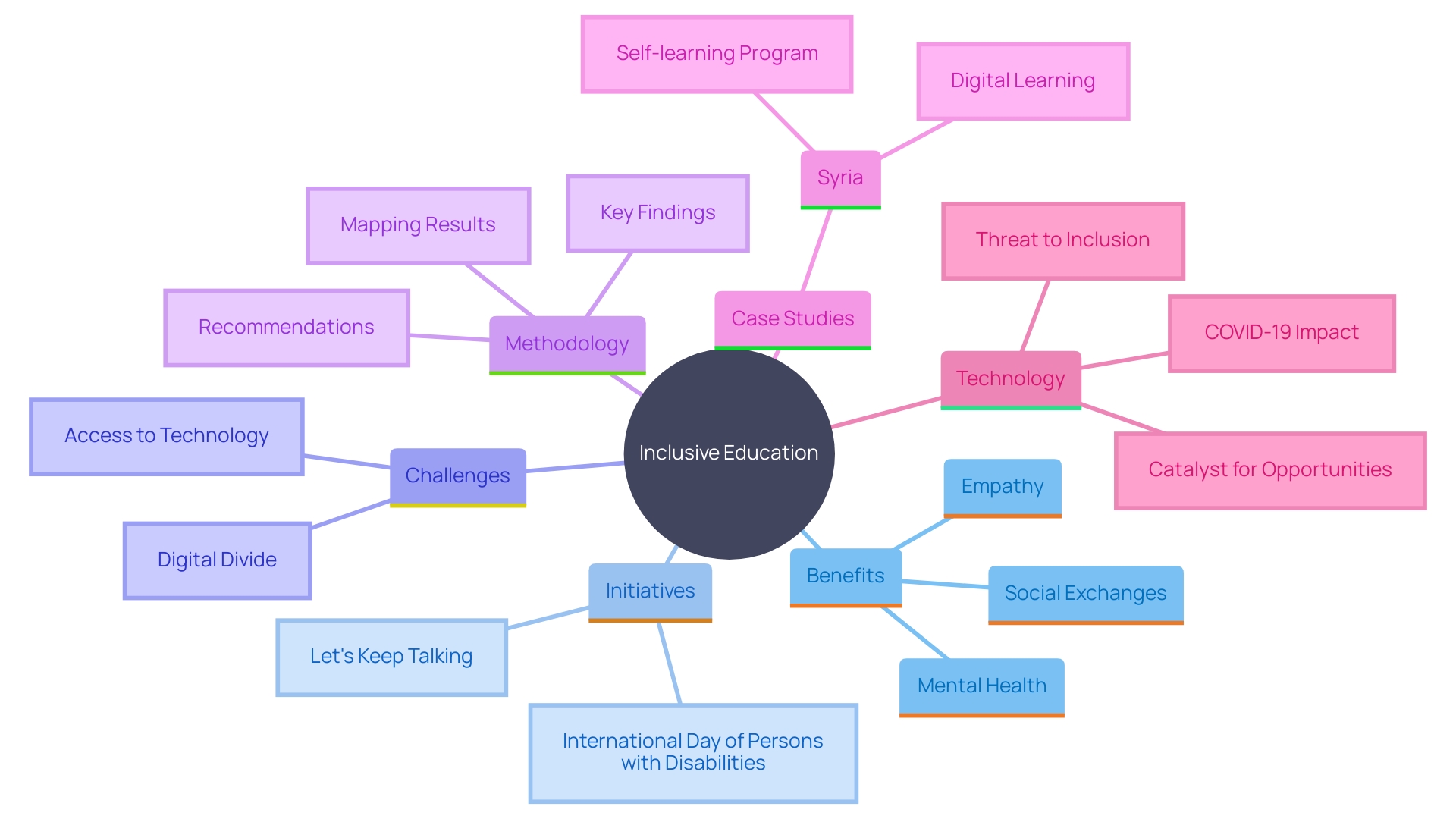
Key Predictors of Success for Students with Autism
Research highlights several crucial factors that predict success for students with autism in educational settings. Prompt assistance stands out as a vital component, ensuring that young individuals receive the support they need as soon as possible. A supportive and understanding educational environment is equally important, as it fosters a sense of belonging and security, which is essential for learning. Active parental involvement also plays a significant role, as engaged parents can advocate for their child's needs and collaborate with educators to create the best possible learning experience.
When schools utilize evidence-based methods customized to individual requirements, individuals with autism are more likely to excel both academically and socially. The integration of such practices has shown promising results, with studies indicating that inclusive education not only benefits individuals with disabilities but also enhances the learning environment for their classmates. For instance, Washington state's initiative to expand access to inclusive education has led to more individuals with disabilities participating in general education classrooms, promoting a more equitable learning experience for all.
Dr. David (Dan) R. Offord, a renowned psychiatrist for young people, emphasized that making education fair for all individuals, including those with disabilities, is crucial for their mental health and overall well-being. Acknowledging the distinct requirements and abilities of every learner, alleviating persistent stressors, and making certain that caregivers possess the essential resources are crucial actions in fostering the healthy growth of children with developmental differences.
Furthermore, the Interagency Autism Coordinating Committee (IACC) has played a crucial role in promoting research and services related to the condition. By promoting teamwork among federal agencies and the community for individuals with developmental disorders, the IACC seeks to enhance results for those affected and their families, ensuring that evidence-based methods are broadly applied and available.
In summary, the blend of early intervention, a nurturing educational setting, and engaged parental participation, backed by evidence-based methods and cooperative initiatives, establishes a route for individuals with developmental differences to reach their maximum capabilities and engage meaningfully in their communities.
Creating a Sensory-Friendly Classroom Environment
Establishing a sensory-friendly classroom is essential for individuals with autism, who may experience sensory overload. Implementing soft lighting, such as LED lights that do not flicker, can significantly reduce discomfort and help maintain focus. Dr. Temple Grandin emphasizes the importance of these lights, nothing that flickering can be highly disruptive to those with sensory sensitivities. Additionally, minimizing noise levels and providing designated quiet areas can create a more controlled environment, reducing potential stressors.
Incorporating sensory tools like fidget toys, weighted blankets, and other tactile aids can also assist individuals in managing their sensory needs. These adjustments not only enhance learners' comfort but also improve their ability to concentrate on learning tasks. Research by Eleanor Fulbeck and colleagues highlights that simple, low-cost changes can have a profound impact on the learning experience, making the classroom more conducive to educational success.
Furthermore, the work of Queen’s researchers underscores the need for inclusive and supportive learning environments, particularly on the International Day of Persons with Disabilities. By incorporating considerate design and sensory adjustments, educators can greatly improve the academic and social growth of individuals on the spectrum.
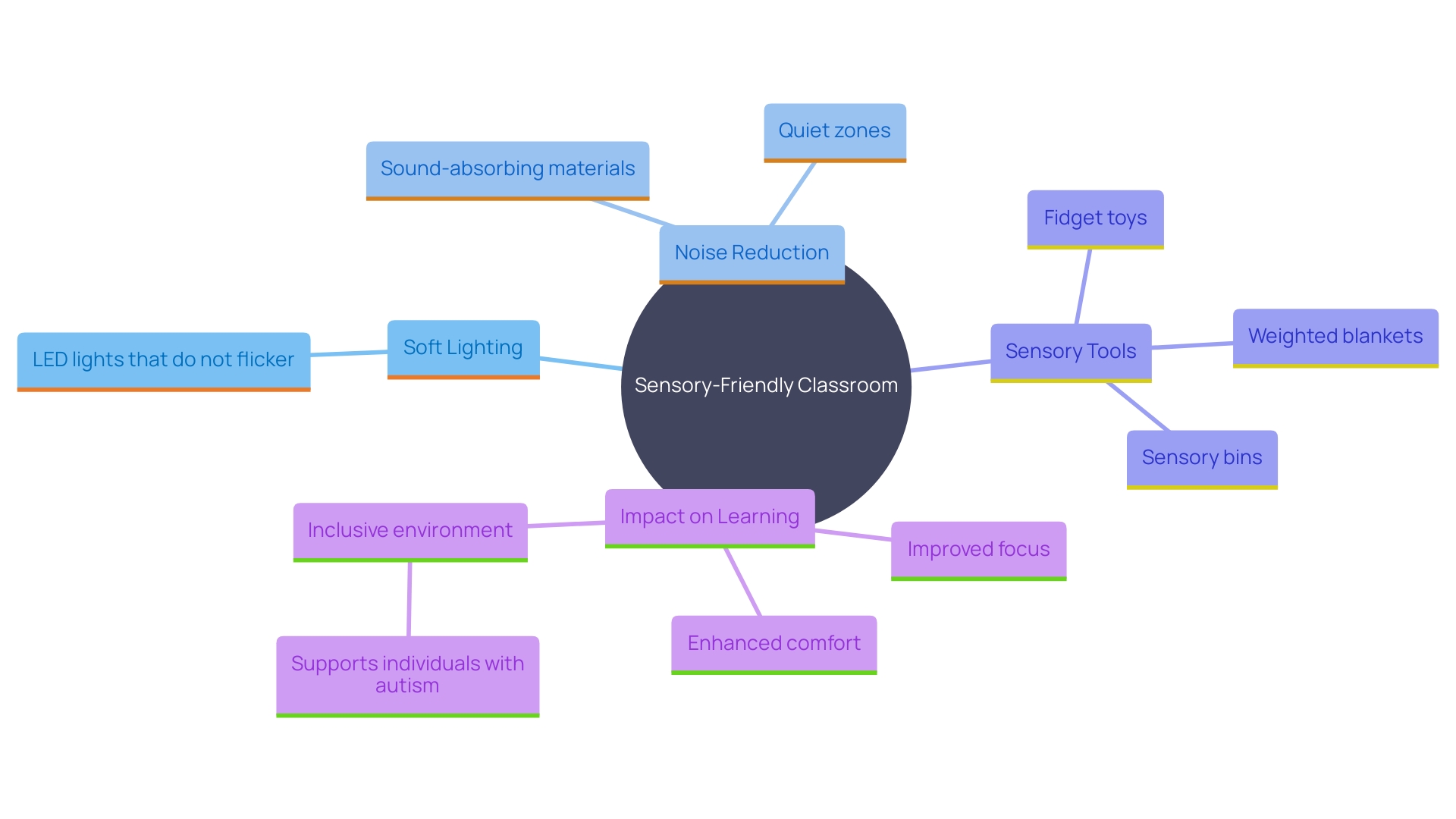
Individualized Education Plans (IEPs) and Their Role
Individualized Education Plans (IEPs) are essential for learners with autism, as they provide tailored learning objectives and necessary accommodations. Working together with educators to create an effective IEP ensures that each learner's unique strengths and challenges are recognized. Regular reviews of the IEP allow for the adjustment of strategies to meet the learner's evolving needs. This collaborative approach is aligned with the principles of the Individuals with Disabilities Education Act (IDEA), which emphasizes preparing individuals for life beyond high school by providing further education and employment opportunities. It's also crucial to consider the appropriate dosage of services; too little intervention may yield minimal progress, while too much can lead to disengagement. Therefore, finding the right balance is essential to maintaining learner engagement and ensuring they benefit from their educational experience. As one expert noted, inclusion is a philosophy based on the belief that all learners belong to their school community, which underscores the importance of these individualized plans.
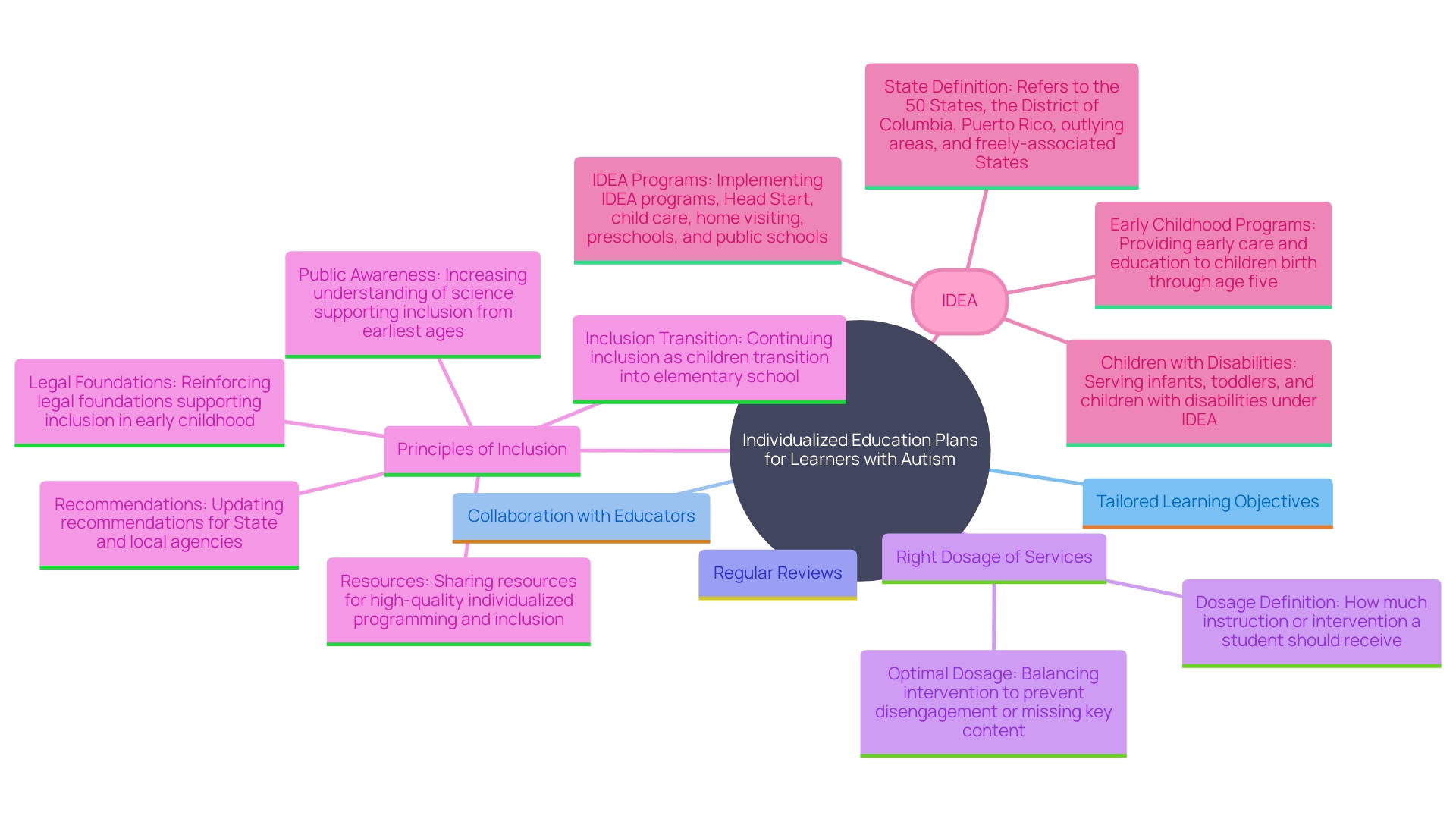
Communication Support and Behavioral Interventions
Effective communication support is crucial for individuals with autism to thrive in academic and social settings. Leveraging Augmentative and Alternative Communication (AAC) tools, such as visual aids, social stories, and technology like speech-generating devices, can significantly enhance their communication skills. These tools offer a multi-modal method that incorporates gestures, manual signs, and electronic communication systems, allowing learners to express themselves more effectively and independently.
Behavioral interventions are equally important in managing challenging behaviors and fostering positive engagement. Methods like positive reinforcement and organized routines establish a reliable setting that aids students in feeling safe and comprehended. As Dr. David Offord, a renowned psychiatrist specializing in youth, emphasized, ensuring that young individuals, including those with disabilities, have a fair and supportive environment is fundamental to their mental health and overall development. By recognizing their unique needs and strengths, we can reduce chronic stress and provide the resources necessary for their healthy growth.
The Interagency Autism Coordinating Committee (IACC) also emphasizes the significance of coordinated efforts in research and services related to developmental disorders, involving various stakeholders from federal agencies, autistic individuals, and their families. This partnership aims to enhance communication and support frameworks, ensuring that youth with developmental disorders receive the extensive care they require. Through these combined efforts, we can create an inclusive educational environment where every young person has the opportunity to succeed.
Social Skills Training and Executive Functioning Support
'Developing social skills is essential for individuals with autism to navigate social interactions effectively.'. Programs such as role-playing, peer modeling, and real-life practice have shown remarkable success in enhancing social abilities. For instance, EPIC Think Learn adopts a neuroaffirmative approach, integrating conversations and games to help children understand their cognitive processes and improve their social interactions.
Supporting executive functioning skills, like organization and time management, is equally important. This provides individuals with the necessary tools to thrive academically and socially. Personalized solutions, like those offered by the Council for Exceptional Children (CEC), provide invaluable resources and training to educators, ensuring that individuals receive tailored support. With initiatives like these, individuals on the spectrum can achieve significant progress, both in their academic pursuits and social engagements.
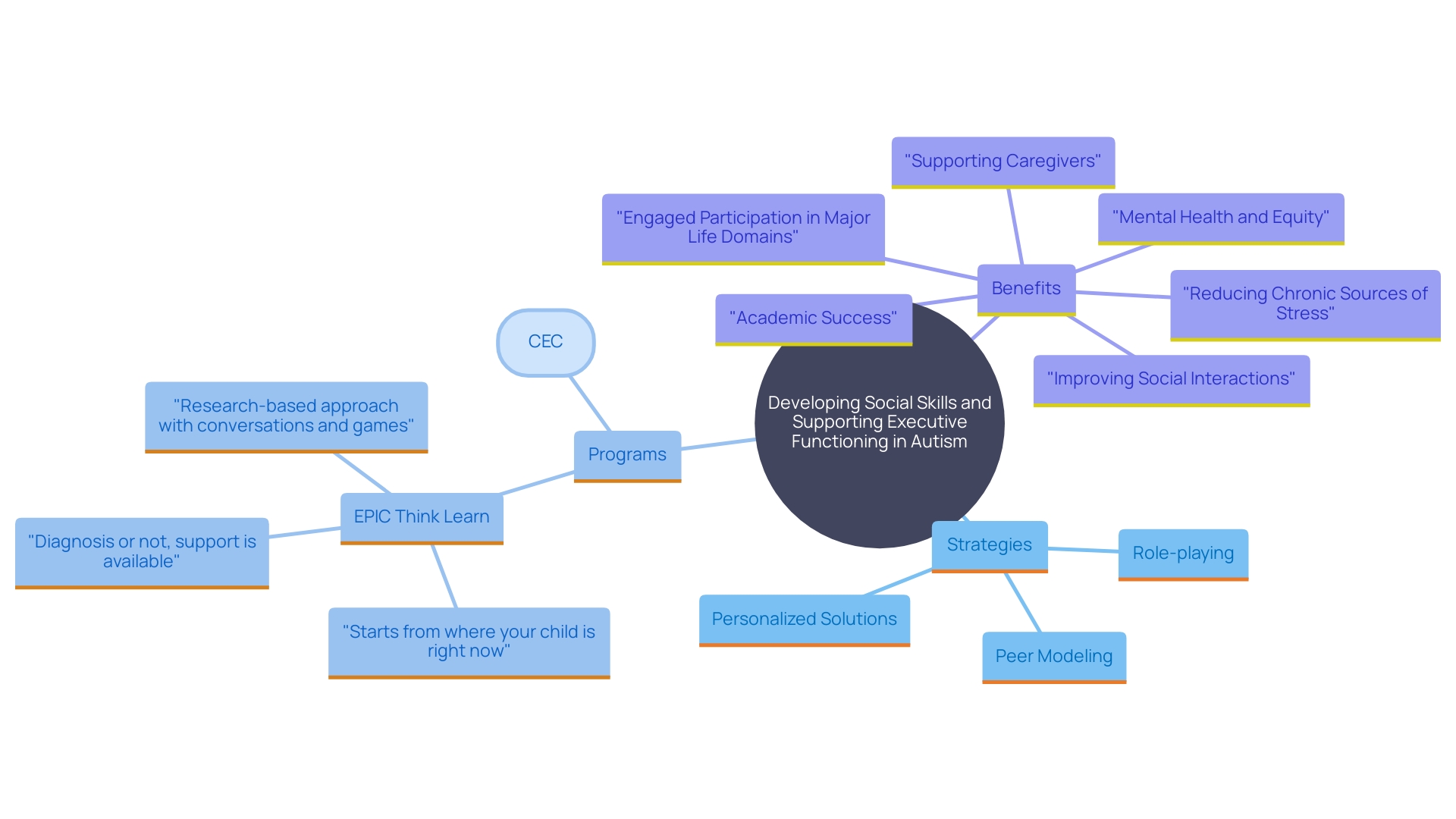
Collaborative Approaches to Support Students with Autism
The achievements of individuals with autism depend on effective collaboration between educators, parents, and therapists. This partnership is rooted in social constructivist theories, such as those developed by psychologist Lev Vygotsky, which emphasize the importance of social interaction in learning. When educators act as facilitators, they assist learners in building knowledge through shared insights and strategies, leading to a cohesive support system.
Consistent communication among all parties guarantees that everyone is aligned on the learner's progress and needs. This collaborative approach is backed by extensive research, demonstrating its effectiveness in developing essential skills like communication, critical thinking, and problem-solving. Moreover, it aids in higher retention of curriculum content.
A practical illustration of this method is the Collaborative Online International Learning (COIL) settings, where learners collaborate in multicultural groups. This method not only enhances curriculum learning but also aids individuals in developing intercultural competencies. Despite its proven benefits, collaborative learning principles are sometimes overlooked in educational practices.
By cultivating a setting where ideas are frequently exchanged, and dialogue is emphasized, we can establish a more nurturing and efficient learning experience for individuals with developmental differences. The Interagency Autism Coordinating Committee (IACC) emphasizes the significance of such collaborative efforts, promoting enhanced coordination and communication among all parties involved in research and services related to the condition.
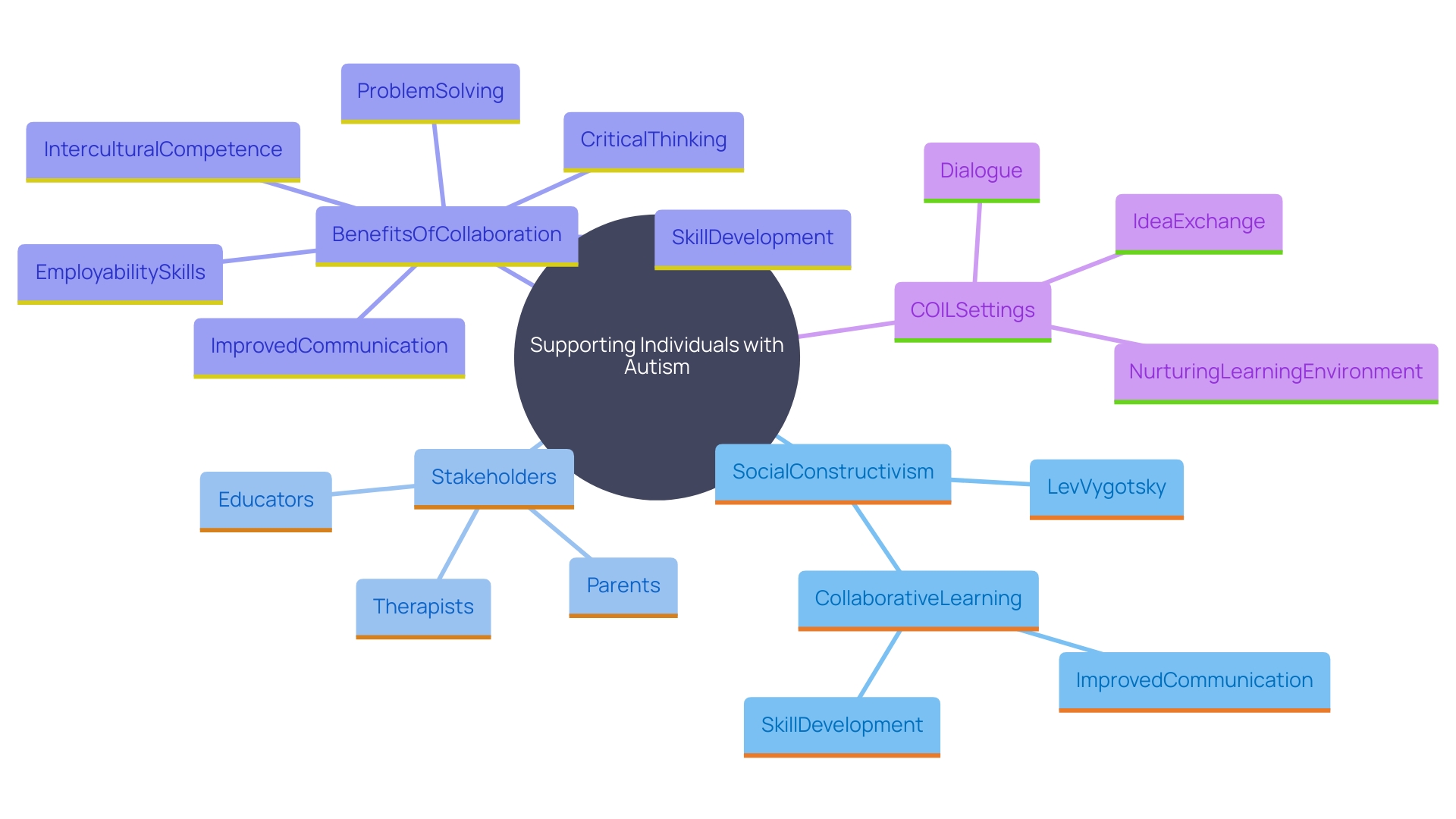
Tips for Parents and Educators
Parents and educators are instrumental in the success of students with autism. To foster a supportive environment, maintaining open lines of communication is essential. This involves regular updates and discussions about the young one's progress and challenges, ensuring everyone is on the same page. Establishing achievable expectations suited to each individual's abilities is essential, as it aids in celebrating small victories, which can greatly enhance a person's confidence and motivation.
Consistent routines and clear instructions are also vital. A structured environment helps students with developmental differences feel secure and better prepared to navigate their educational journeys. As stated by the National Academies of Sciences, Engineering, and Medicine, establishing a reliable and nurturing environment can greatly improve the educational experience for young individuals on the spectrum.
Furthermore, the Interagency Autism Coordinating Committee (IACC) emphasizes the importance of collaboration between federal agencies, researchers, and the autism community to improve services and support. This collaborative approach ensures that the unique needs of each child are met, providing a foundation for academic and social success.
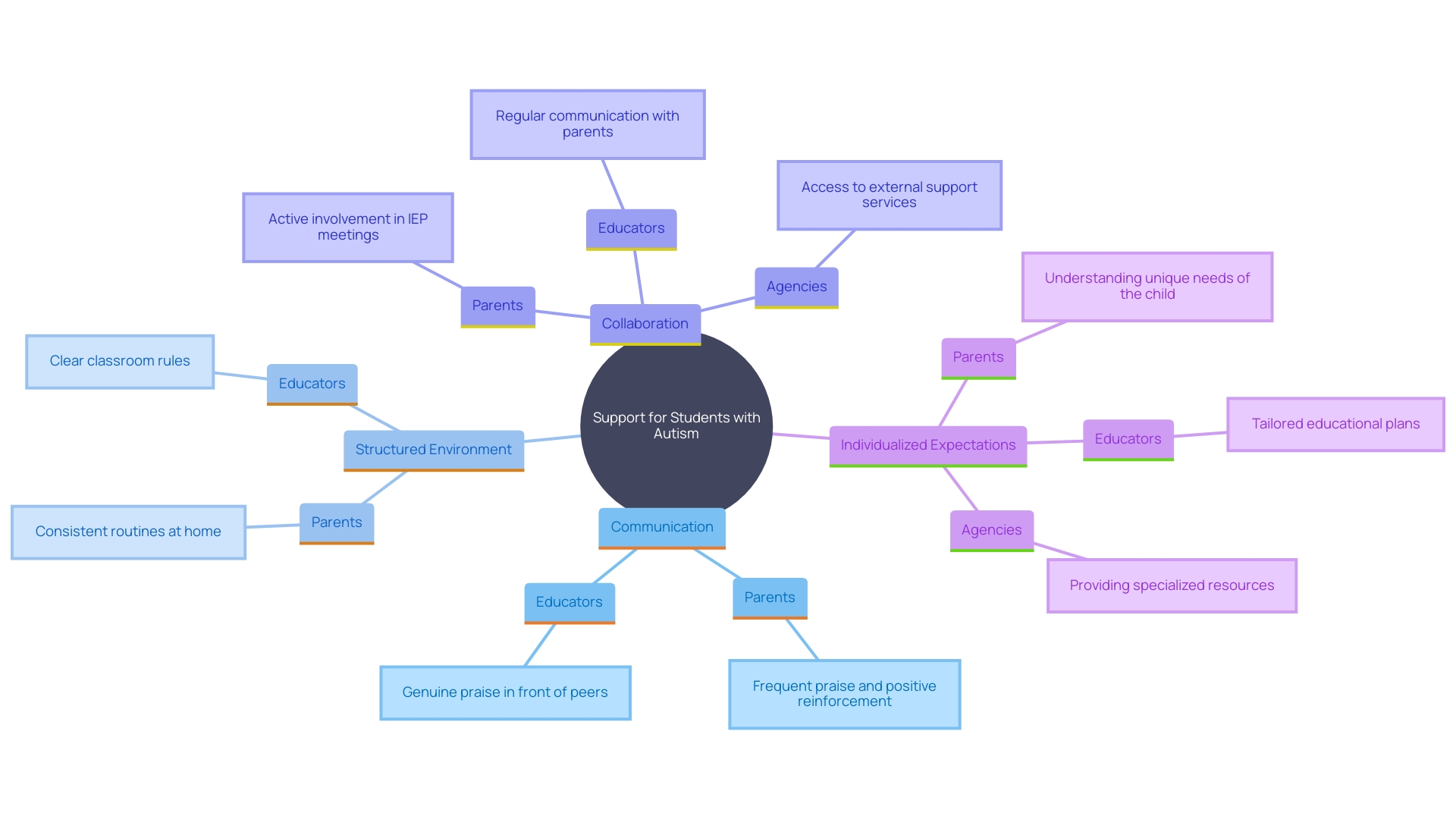
Conclusion
Inclusive education stands as a cornerstone for the development and success of all students, particularly those with autism. By fostering an environment that embraces diversity, schools not only enhance the social interactions of students with autism but also cultivate empathy among their peers. Initiatives like Neurodiversity Week serve as vital reminders of the ongoing commitment to inclusion, encouraging continuous dialogue and awareness within educational settings.
Research consistently demonstrates the positive impact of inclusive practices, underscoring the need for early intervention, supportive environments, and active parental involvement. These elements are crucial in creating a pathway for students with autism to thrive academically and socially. Furthermore, the role of Individualized Education Plans (IEPs) cannot be overstated, as they tailor educational experiences to meet the unique needs and strengths of each student.
Creating sensory-friendly environments, employing effective communication supports, and implementing behavioral interventions are essential strategies that can significantly enhance the learning experience for students with autism. Collaborative approaches among educators, parents, and therapists ensure that all stakeholders work together to support these students, fostering an inclusive atmosphere that benefits everyone involved.
Ultimately, the commitment to inclusive education lays the groundwork for a more equitable society. By prioritizing the needs of students with autism and actively implementing strategies that promote their success, communities can create an educational landscape where every child has the opportunity to flourish.




